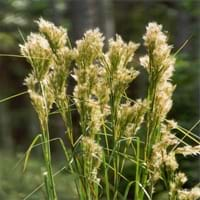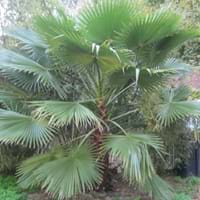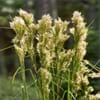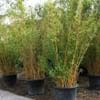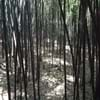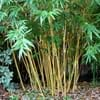Life Span
Perennial
Perennial
Origin
Caribbean, Central America
United States, Southeastern United States
Types
Broomsedge Bluestem, Broomsedge
Not Available
Number of Varieties
Not Available
Habitat
ditches, Grassland, Moist Ditches, Moist Soils, Roadsides
Coastal sand dunes, Dry areas, moist forests, Wet lands
USDA Hardiness Zone
5-9
8-12
AHS Heat Zone
10 - 5
12-8
Sunset Zone
H1, 3a, 3b, 4, 5, 6, 7, 8, 9, 14, 15, 16, 17, 18, 19, 20, 21, 22, 23, 24
H1, H2, 7, 8, 9, 10, 11, 12, 14, 15, 16, 17, 18, 20, 21, 22, 23, 24
Habit
Upright/Erect
Clump-Forming
Flower Color
Cream, Green, White
White
Flower Color Modifier
Bicolor
Bicolor
Fruit Color
Not Available
Black
Leaf Color in Spring
Green, Blue Green
Light Green, Blue Green, Gray Green
Leaf Color in Summer
Light Green
Green, Blue Green, Gray Green, Silver
Leaf Color in Fall
Gray Green, Yellow green, Bronze
Blue Green, Gray Green
Leaf Color in Winter
Gold, Tan, Bronze
Blue Green, Olive, Gray Green
Leaf Shape
Grass like
Palmate
Plant Season
Fall, Winter
Spring, Summer, Fall, Winter
Sunlight
Full Sun, Partial Sun
Full Sun, Partial Sun, Partial shade
Type of Soil
Clay, Loam, Sand
Clay, Loam, Sand
The pH of Soil
Acidic, Neutral, Alkaline
Acidic, Neutral, Alkaline
Soil Drainage
Average
Well drained
Bloom Time
Late Summer, Early Fall, Fall, Late Fall, Early Winter
Spring, Late Spring
Tolerances
Not Available
Wet Site, Pollution, Salt, Soil Compaction
Where to Plant?
Ground
Container, Ground
How to Plant?
Root Division, Seedlings
Seedlings
Plant Maintenance
Medium
Medium
Watering Requirements
Keep ground moist, Water Deeply
Drought Tolerant, occasional watering once established
In Summer
Lots of watering
Lots of watering
In Spring
Moderate
Moderate
In Winter
Average Water
Average Water
Soil pH
Acidic, Neutral, Alkaline
Acidic, Neutral, Alkaline
Soil Type
Clay, Loam, Sand
Clay, Loam, Sand
Soil Drainage Capacity
Average
Well drained
Sun Exposure
Full Sun, Partial Sun
Full Sun, Partial Sun, Partial shade
Pruning
Cut or pinch the stems, Remove damaged leaves, Remove dead branches, Remove dead leaves
Remove damaged leaves, Remove dead branches, Remove dead leaves
Fertilizers
All-Purpose Liquid Fertilizer
All-Purpose Liquid Fertilizer
Pests and Diseases
Red blotch
Birds
Plant Tolerance
Drought
Drought
Flowers
Showy
Insignificant
Flower Petal Number
Single
Single
Foliage Texture
Coarse
Coarse
Foliage Sheen
Matte
Matte
Attracts
Birds, Butterflies
Birds
Allergy
Not Available
gas, Heartburn, Nausea, Stomach pain, Vomiting
Aesthetic Uses
Ground Cover
Unknown
Beauty Benefits
Not Available
Not Available
Environmental Uses
Air purification, Food for animals, Food for birds, Provides ground cover, Wildlife
Air purification
Medicinal Uses
Not Available
chest congestion, Cough, Digestion problems, Inflammation, Sedative, Thyroid problems, Urinary problems
Part of Plant Used
Seeds
Fruits
Other Uses
Used as Ornamental plant
Paper pulp, Used in herbal medicines
Used As Indoor Plant
No
No
Used As Outdoor Plant
Yes
Yes
Garden Design
Container, Dried Flower/Everlasting, Feature Plant, Mixed Border, Rock Garden / Wall
Container, Feature Plant, Foundation, Mixed Border, Rock Garden / Wall, Tropical
Botanical Name
ANDROPOGON glomeratus
SERENOA repens
Common Name
Bushy Beardgrass, Bushy Bluestem, Bushy Broom Grass
Saw Palmetto
In Hindi
Bushy Bluestem plant
Serenoa
In German
Bushy Bluestem Pflanze
Sägepalme
In French
plante buissonnante Bluestem
Serenoa repens
In Spanish
planta arbustiva andropogon
Serenoa repens
In Greek
φυτό θαμνώδη BLUESTEM
Serenoa
In Portuguese
planta arbustiva Bluestem
Serenoa repens
In Polish
Krzaczaste Bluestem roślin
Serenoa
In Latin
Bushy bluestem herba
Serenoa
Phylum
Magnoliophyta
Magnoliophyta
Class
Liliopsida
Liliopsida
Genus
Andropogon
Serenoa Hook. f.
Clade
Angiosperms, Commelinids, Monocots
Angiosperms, Commelinids, Monocots
Tribe
Andropogoneae
Trifolieae
Subfamily
Panicoideae
Coryphoideae
Importance of Bushy Bluestem and Saw Palmetto
Want to have the most appropriate plant for your garden? You might want to know the importance of Bushy Bluestem and Saw Palmetto. Basically, these two plants vary in many aspects. Compare Bushy Bluestem and Saw Palmetto as they differ in many characteristics such as their life, care, benefits, facts, etc. Every gardener must at least have the slightest clue about the plants he wants to plant in his garden. Compare their benefits, which differ in many ways like facts and uses. The medicinal use of Bushy Bluestem is Not Available whereas of Saw Palmetto is chest congestion, Cough, Digestion problems, Inflammation, Sedative, Thyroid problems and Urinary problems. Bushy Bluestem has beauty benefits as follows: Not Available while Saw Palmetto has beauty benefits as follows: Not Available.
Compare Facts of Bushy Bluestem vs Saw Palmetto
How to choose the best garden plant for your garden depending upon its facts? Here garden plant comparison will help you to solve this query. Compare the facts of Bushy Bluestem vs Saw Palmetto and know which one to choose. As garden plants have benefits and other uses, allergy is also a major drawback of plants for some people. Allergic reactions of Bushy Bluestem are Not Available whereas of Saw Palmetto have gas, Heartburn, Nausea, Stomach pain and Vomiting respectively. Having a fruit bearing plant in your garden can be a plus point of your garden. Bushy Bluestem has showy fruits and Saw Palmetto has showy fruits. Also Bushy Bluestem is not flowering and Saw Palmetto is not flowering . You can compare Bushy Bluestem and Saw Palmetto facts and facts of other plants too.
